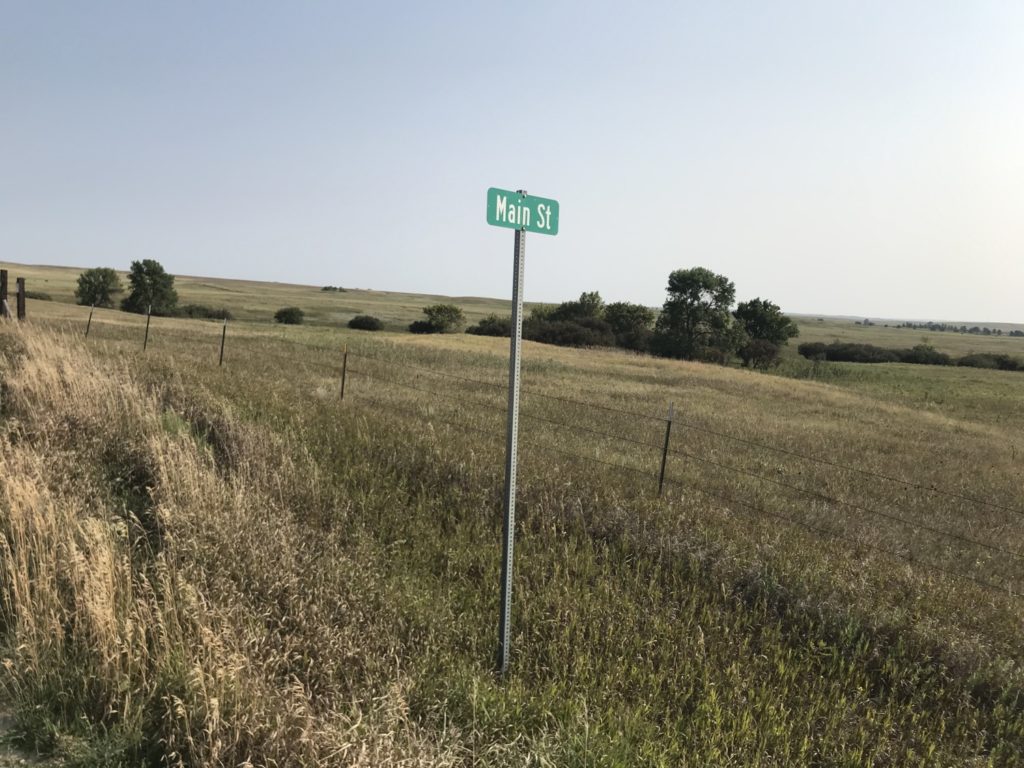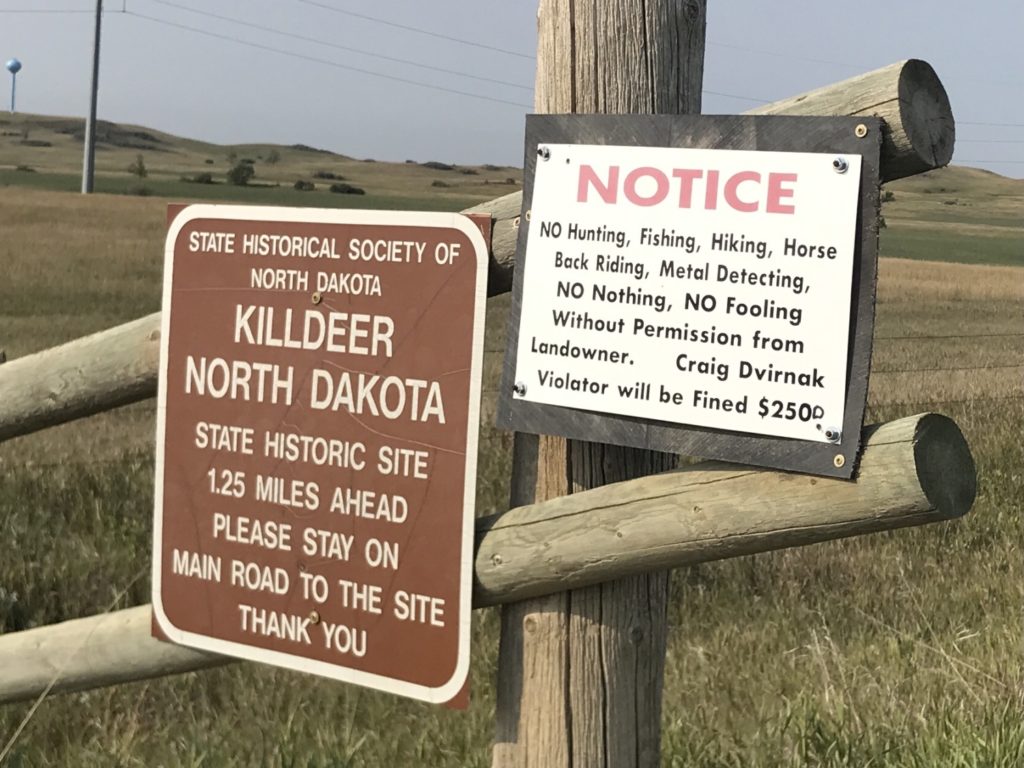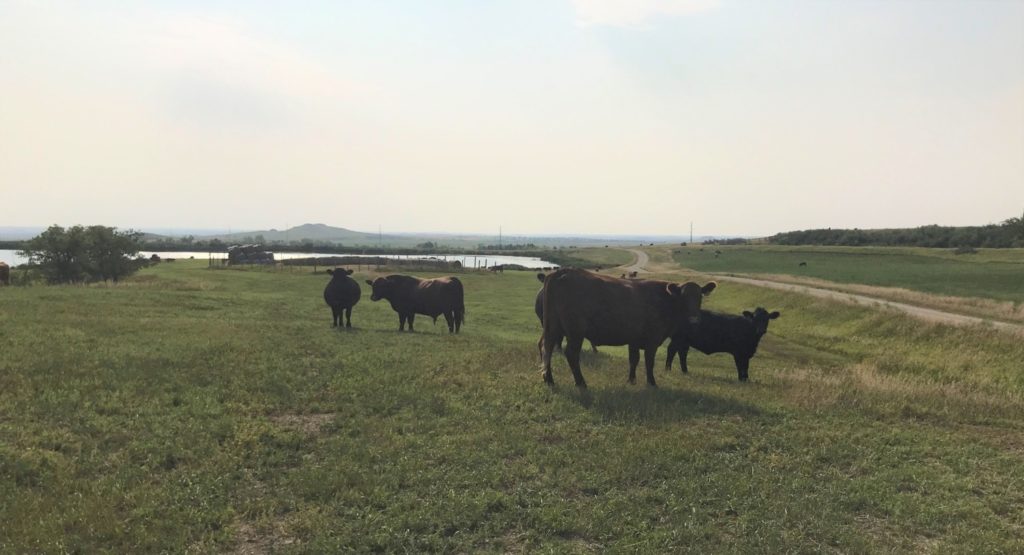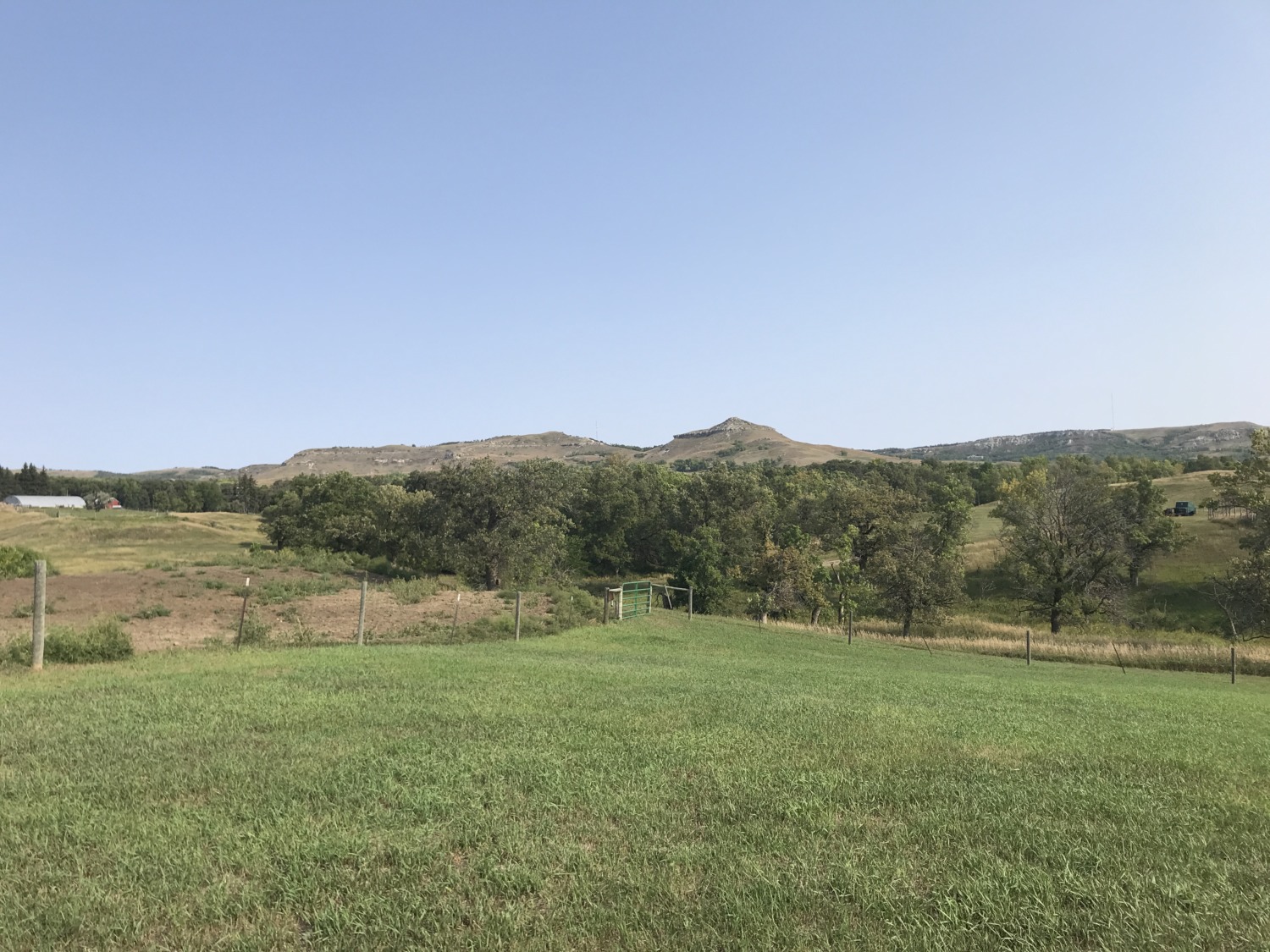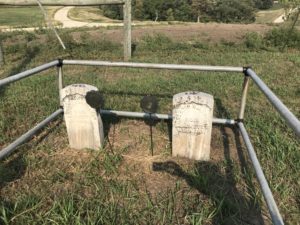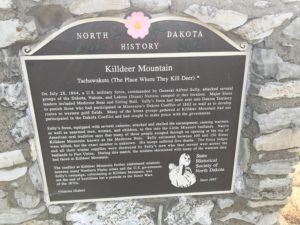On our way to Knife River Indian Villages National Historic Site, Tom and I made a small detour to see Killdeer Mountain Battlefield State Historic Site. I had been wanting to see this place that precipitated the battles between the Army and the Sioux in Dakota territory.
The most challenging part of visiting Killdeer Mountain Battlefield State Historic Site was finding it. There is a sign on ND 200 telling you where to turn. There is also a road called Killdeer Mountain Battlefield Rd. Unfortunately, there was road construction blocking one of the county roads we needed to take and none of the roads had signs saying their names. We never found Killdeer Mountain Battlefield Rd.
We did, eventually, find at least part of the battlefield. There was a small sign that said the state historic site was just ahead. Next to it, however, was a sign that read “NO hunting, fishing, hiking, horse back riding, metal detecting, NO nothing, NO fooling” next to it. Not exactly a welcoming sign. We continued down the dirt road, driving through a herd of curious cattle. There was a small dirt parking lot and a historical marker that said we had arrived.
Killdeer Mountain Battlefield State Historic Site overlooks the site of a battle fought on July 28, 1864, between troops commanded by General Sully and a peaceful gathering of Sioux Indians. This attack on an Indian trading village in the Killdeer Mountains was one of a series of military reprisals against the Sioux that followed the US-Dakota War of 1862 in Minnesota. However, many of the village’s inhabitants were not involved in that war.
The region of Killdeer Mountain was long recognized as a good hunting spot and a gathering and trading point for groups of Sioux people. By July 1864 large numbers of Hunkpapas (including Chief Sitting Bull), had arrived. Many Yanktonai, Blackfeet, and a small number of Dakotas had also gathered.
Brigadier General Alfred Sully was charged with protecting miners heading to Montana and keeping the lines of communication open along the Missouri and Little Missouri Rivers. On July 28, 1864, scouts told Sully that they had found an Indian camp of about 1,500 lodges a few miles ahead. Sully immediately decided to attack the peaceful gathering.
As the soldiers neared the Indian encampment, groups of Indian warriors rode along their flank, skirmishing with the soldiers as they went, and circling around to the rear. From a nearby hill, the soldiers set up cannons and fired upon the encampment where the women and children had stayed. A line of Indian warriors formed in front of the encampment. As their families climbed to safety, the warriors valiantly defended them until darkness silenced the guns.
The following morning, the soldiers burned all the lodges. They collected all the food, skins, and household utensils and collected them or destroyed them. No prisoners were taken. Any wounded Indians left behind were shot.
With the rest of his force, Sully set out after the people who had escaped Killdeer, but they made good use of the broken terrain, and Sully was unable to find them. About 150 Indians were killed and the battle solidified the antagonism of those Native Americans, especially the Lakotas, who had not participated in the US-Dakota War of 1862, toward the encroaching whites.
Today the Killdeer Mountain Battlefield site looks much as it must have when the battle took place. There is a sandstone slab monument that describes the battle. Two headstones honor soldiers killed in the battle. Tom and I walked around a little and noted the farmer who now owns the land surrounding the historic site. Our difficulty in finding the site increased our appreciation for its preservation.

